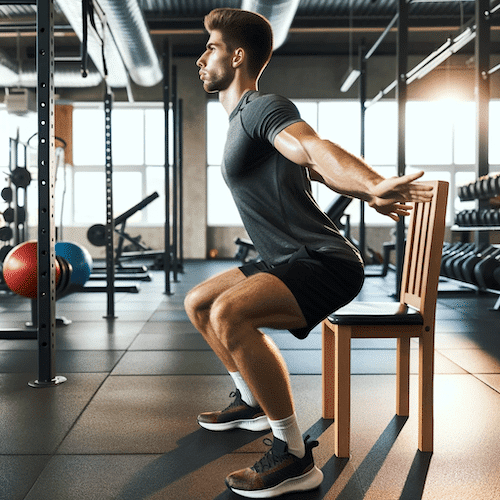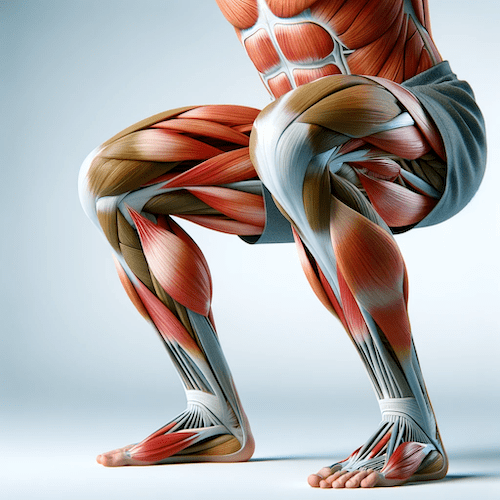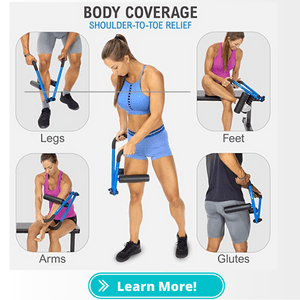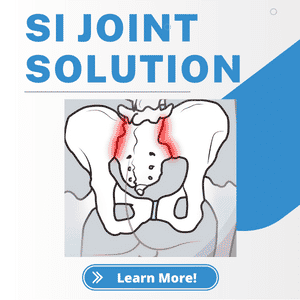Chair Sit Squats – How To Perform The Exercise
Are you searching for a straightforward and effective exercise to enhance your lower body strength? Maybe you’re feeling overwhelmed by complex routines, or perhaps gym equipment seems intimidating.
Chair sit squats are a simple yet powerful way to work out your muscles without needing any fancy gear.
According to the American Council on Exercise, incorporating squats into your fitness regimen can significantly improve leg strength and tone up your glutes. In this article, we’ll guide you through the process of performing chair sit squats correctly—targeting key muscle groups and ensuring safety along the way.
You’ll learn about variations that suit different fitness levels and understand why they’re an essential addition to any workout routine. Ready for stronger legs and a firmer backside? Let’s dive in!

Key Takeaways
- Chair sit squats help build strength in the lower body, targeting muscles like quadriceps, hamstrings, glutes, and core. By squatting down to a chair and standing back up, you work on essential muscle groups for stability and everyday movements.
- Proper form is crucial when performing chair sit squats: feet should be shoulder-width apart, knees aligned with feet, chest upright while lowering slowly to touch the seat without fully sitting. Stand by pressing through heels and engaging glutes.
- There are many variations of chair sit squats to suit different fitness levels or add challenge; beginners can start with shallow squats while advanced exercisers might add weights or try one-legged squats for increased difficulty.
- This exercise also improves posture by encouraging proper spinal alignment and offers a low-impact cardiovascular workout that can benefit those with joint concerns or mobility issues.
- Squatting exercises like these aid in enhancing functional movements such as sitting down and standing up which translates to better performance in daily tasks.
Proper form and technique
After learning what chair sit squats are, let’s dive into the correct way to perform this exercise. Mastering the proper form and technique ensures you work the right muscles safely.
- Stand in front of a sturdy chair with your feet shoulder – width apart and your toes pointing straight ahead.
- Engage your core as you bend at the knees and slowly lower your butt towards the seat of the chair.
- Keep your chest upright and your spine straight as if you were sliding down a wall.
- Make sure your knees stay in line with your feet during the descent.
- Lower yourself until you slightly touch the seat, keeping tension in your quads and hamstrings.
- Pause for a moment with your butt just touching the chair without fully sitting down to maintain muscle engagement.
- Press through your heels to stand back up, returning to the starting position.
- As you rise, squeeze through your glute muscles to boost their strength.
- Throughout each squat, keep breathing steadily; inhale on the way down and exhale as you stand up.
- Repeat this movement for a set number of repetitions
Muscles targeted

Once you’ve mastered the proper form and technique, it’s time to focus on the muscles that chair sit squats work. This exercise is great for building strength primarily in your lower body.
Your quadriceps, which are the large muscles on the front of your thigh, do most of the heavy lifting as you lower into a squat and push back up to standing position. The hamstrings at the back of your thighs help as well, along with your glutes—those are the muscles in your butt.
Chair sit squats also engage your core muscles to keep your torso stable throughout the movement. With every squat, you’re working on keeping those abdominal and back muscles tight to support your spine.
And let’s not forget about muscle groups like hip abductors and calves; they play supporting roles by helping stabilize legs while bending knees lowering down or rising from a 90-degree angle stance near parallel to floor level ensuring balance control during this effective chair exercise routine.
Benefits of chair sit squats
Chair sit squats are a fantastic way to build strength in your lower body. As you bend your knees and lower yourself onto the chair, you engage muscles like your glutes, hamstrings, and quadriceps.
This exercise helps with mobility too; by practicing sitting down and standing up, you improve the range of motion in your hips and knees. They’re also a safe option for beginners because the chair provides stability and can prevent falls.
You’ll find that this type of squat is great for working on posture as well. Keeping your back straight while lowering yourself forces those shoulder blades together, helping to strengthen the upper back muscles which contribute to better alignment throughout the day.
Additionally, it’s an effective low-impact workout that increases heart rate without straining joints – making it ideal for people with mobility issues or those who are looking for gentle cardio options.
Next up: Variations and modifications of chair sit squats – let’s explore how to keep this exercise fresh!
Variations and modifications
Having learned the benefits of chair sit squats, you might be eager to try different styles to keep your workouts fresh and challenging. Chair sit squats can be varied in several ways to cater to different fitness levels and goals.
- Modify for beginners: Start by reducing the depth of your squat. Instead of sitting all the way down, touch your butt to the chair lightly and then stand up again. This will make it easier and help build strength over time.
- Add weights: Once comfortable with the basic movement, hold a dumbbell in each hand or wear a weighted vest to increase resistance, which in turn helps in building muscle strength.
- Play with tempo: Change how fast you perform each squat. Try a slow descent followed by an explosive rise to activate different muscle fibers.
- One-legged variation: Lift one leg slightly off the floor while performing the squat with the other leg. This not only challenges your balance but also strengthens your muscles asymmetrically.
- Integrate stretches: Between sets, perform a stretch like yoga’s downward dog or a wall sit for added flexibility and endurance training.
- Include upper body movements: As you squat down, reach overhead with both arms extended towards the ceiling to engage your upper body and add an overhead press when standing up.
- Work on abduction: Place a resistance band around your thighs just above your knees; as you squat down, push your knees outward against the band’s tension for extra work on your outer thighs and glute medius.
- Rotate through angles: Face away from or sideways to the back of the chair occasionally, which changes how gravity affects your body during the exercise and targets muscles differently.
Conclusion
Chair sit squats offer a solid workout for anyone looking to strengthen their lower body using just their body weight. With each squat, you’re helping your muscles work better and increasing your stability.
Remember the step-by-step instruction to maintain proper form and protect your joints. Embrace the variations to keep challenging yourself as you get stronger. Incorporate this exercise into your routine, and experience the rewards of improved strength and endurance in everyday activities.
Tags In
Sam Visnic
Most Popular Posts
Categories
- Deep Gluteal Pain Syndrome (8)
- Deltoids (2)
- Foam Rolling (2)
- Glutes (9)
- Hamstrings (5)
- Hypnosis for Pain (3)
- Lats (2)
- Levator Scapulae (4)
- Lifestyle (8)
- Massage Therapy (39)
- Mobility (21)
- Movement and Exercise (19)
- Muscles (22)
- Nutrition (2)
- Obliques (1)
- Pain (25)
- Pectorals (3)
- Piriformis (3)
- Plantar Fasciitis (11)
- Psoas (11)
- Quadratus Lumborum (3)
- Quadriceps (2)
- Rhomboids (3)
- Sciatica (1)
- Serratus Anterior (1)
- SI Joint (14)
- Sternocleidomastoid (1)
- Stretching (18)
- Subscapularis (1)
- TMJ (2)
- Trapezius (1)
- Uncategorized (12)








